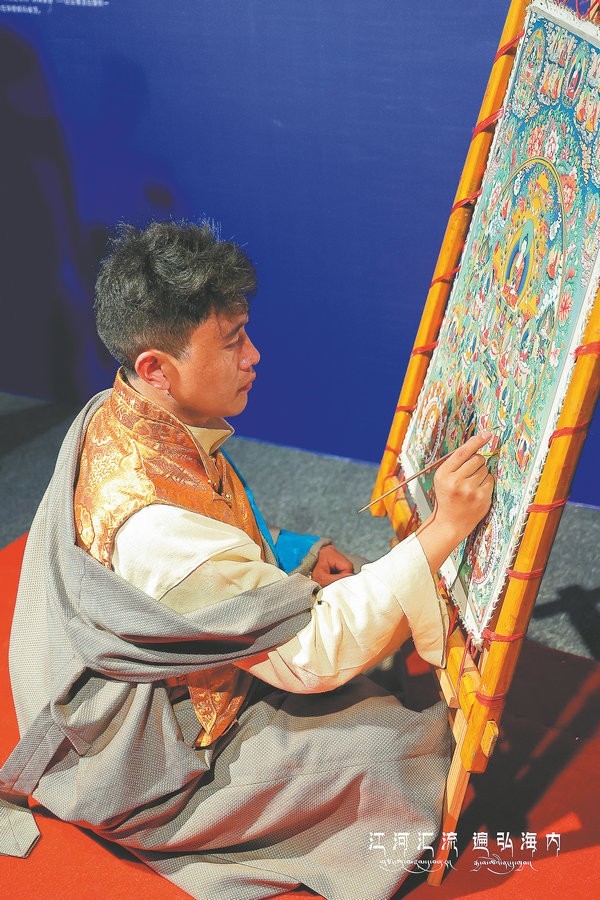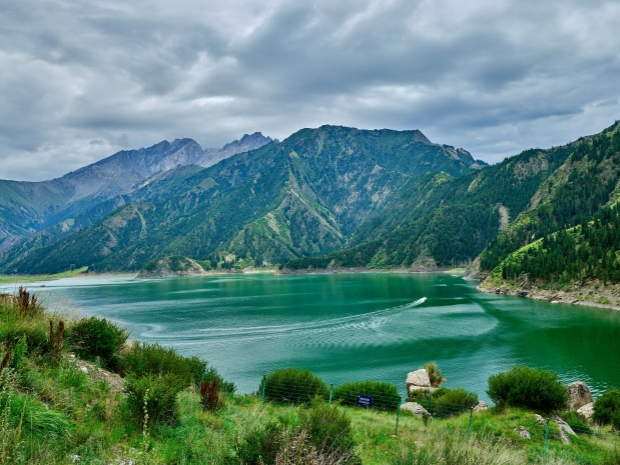
A Tibetan thangka artist showcases paintings at an exhibition in the Shanghai History Museum on Saturday. [Photo provided to China Daily]
Sakya county has played an important role in Chinese history. In 1247, a Tibetan religious leader, Sakya Pandita, started his three-year journey to Liangzhou — today known as Wuwei, in Gansu province — to meet with the Mongolian prince. The meeting, called the Liangzhou Talk, created a political foundation for Tibet being included in a united Chinese nation.
After Sakya Pandita passed away, Phagpa, who also participated in the Liangzhou Talk, inherited his religious authority. Kublai Khan, the founder of the Yuan Dynasty, appointed Phagpa as imperial preceptor and Sakya thus became a pivotal place connecting Tibet and the central government.
Thangka artists created a collection of 30 large thangkas to document the history of Phagpa and his involvement in the Liangzhou Talk, as well as his visit to Kublai Khan in Beijing. Only 25 of these works still remain today.
If you go
Shanghai History Museum, 325 Nanjing West Road, Shanghai, till Aug 10
Xuhui Art Museum, 1413 Huaihai Middle Road, Shanghai, till July 2





